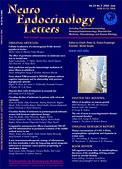Levova K, Moserova M, Kotrbova V, Sulc M, Henderson CJ, Wolf CR, Phillips DH, Frei E, Schmeiser HH, Mares J, Arlt VM, Stiborova M. Toxicol. Sci. 2011 121 (1): 43–56. IF: 4,814

Abstract 1
Aristolochic acid (AA) causes aristolochic acid nephropathy, Balkan endemic nephropathy, and their urothelial malignancies. To identify enzymes involved in the metabolism of aristolochic acid I (AAI), the major toxic component of AA we used HRN (hepatic cytochrome P450 [Cyp] reductase null) mice, in which NADPH:Cyp oxidoreductase (Por) is deleted in hepatocytes. AAI was demethylated by hepatic Cyps in vitro to 8-hydroxy-aristolochic acid I (AAIa), indicating that less AAI is distributed to extrahepatic organs in wild-type (WT) mice. Indeed, AAI-DNA-adduct levels were significantly higher in organs of HRN mice, having low hepatic AAI demethylation capacity, than in WT mice. Absence of AAI demethylation in HRN mouse liver was confirmed in vitro; hepatic microsomes from WT, but not from HRN mice, oxidized AAI to AAIa. To define the role of hepatic Cyps in AAI demethylation, modulation of AAIa formation by CYP inducers was investigated. We conclude that AAI demethylation is attributable mainly to Cyp1a1/2. The higher AAI-DNA adduct levels in HRN than WT mice were the result of the lack of hepatic AAI demethylation concomitant with a higher activity of cytosolic NAD(P)H:quinone oxidoreductase (Nqo1), which activates AAI. Mouse hepatic Cyp1a1/2 also activated AAI to DNA adducts under hypoxic conditions in vitro, but in renal microsomes, Por and Cyp3a are more important than Cyp1a for AAI-DNA adduct formation. We propose that AAI activation and detoxication in mice are dictated mainly by AAI binding affinity to Cyp1a1/2 or Nqo1, by their turnover, and by the balance between oxidation and reduction of AAI by Cyp1a.
Abstract 2
OBJECTIVE: The herbal drug aristolochic acid (AA) derived from Aristolochia species has been shown to be the cause of aristolochic acid nephropathy (AAN), Balkan endemic nephropathy (BEN) and their urothelial malignancies. One of the common features of AAN and BEN is that not all individuals exposed to AA suffer from nephropathy and tumor development. One cause for these different responses may be individual differences in the activities of the enzymes catalyzing the biotransformation of AA. Thus, the identification of enzymes principally involved in the metabolism of AAI, the major toxic component of AA, and detailed knowledge of their catalytic specificities is of major importance. Therefore, the present study has been designed to evaluate the cytochrome P450 (CYP)-mediated oxidative detoxification and reductive activation of AAI in a rat model. METHODS: DNA adduct formation was investigated by the nuclease P1 version of the 32P-postlabeling method. The CYP-mediated formation of a detoxication metabolite of AAI, 8-hydroxyaristolochic acid I (AAIa), in vitro in rat hepatic microsomes was determined by HPLC. RESULTS: Rat hepatic CYPs both detoxicate AAI by its oxidation to AAIa and reductively activate this carcinogen to a cyclic N-acylnitrenium ion forming AAI-DNA adducts in vitro. To define the role of hepatic CYPs in AAI demethylation and activation, the modulation of AAIa and AAI-DNA adduct formation by CYP inducers and selective CYP inhibitors was investigated. Based on these studies, we attribute the major role of CYP1A1 and 1A2 in AAI detoxication by its demethylation to AAIa, and, under hypoxic conditions also to AAI activation to species forming DNA adducts. Using microsomes of Baculovirus transfected insect cells (Supersomes™) containing recombinantly expressed rat CYPs, NADPH:CYP reductase and/or cytochrome b5, a major role of CYP1A1 and 1A2 in both reactions in vitro was confirmed. CONCLUSION: Based on the results found in this and former studies we propose that AAI activation and detoxication in rats are dictated mainly by AAI binding affinity to CYP1A1/2 or NADPH(P)H:quinone oxidoreductase, by their turnover and by the balance between oxidation and reduction of AAI by CYP1A.
-mk-